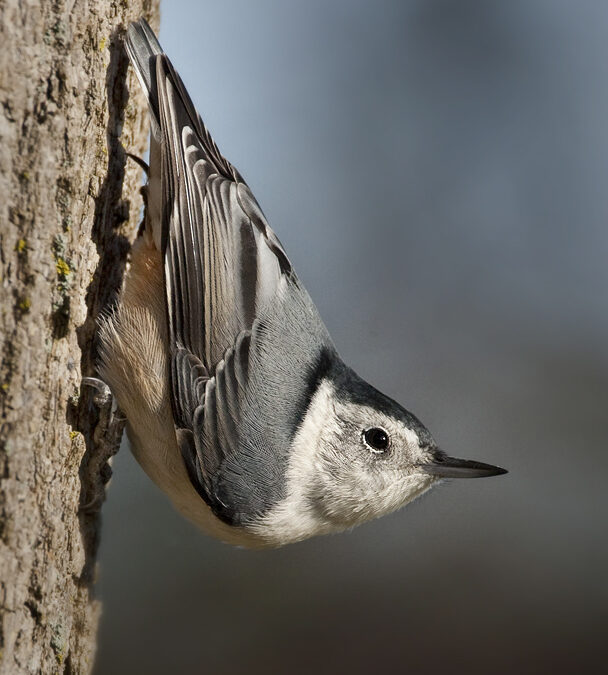
by Scott Martin Photography | Oct 31, 2010 | Birds, Blog, General, Sparrows
After much investigation, I’ve decided to make a radical change to the website and blog in order to make them function more seamlessly together and also develop a more professional web presence. This change will take place over the next few weeks however as with all websites it will remain a work in progress as we continually strive to make it better. Although the appearance of the website will change dramatically, the ‘back end’ will change even more as we move to a new web hosting company, Bluehost, and re-write the website and blog using WordPress which is a big change from our old template driven flash site. Although the flash site had many advantages and was easy to set up, WordPress offers far more flexibility and the opportunity to build a comprehensive website to best showcase our photography. I stand at the bottom of a huge learning curve, but it is an exciting one. Please stand by as we transition to the new site and any suggestions or comments you may have are more than welcome.
This post is actually the first using WordPress, however all the posts from the old Blogger site have been successfully imported into the new blog….and now to switch gears and see if the image linking works I’d like to show you two little birds from last week’s trip down to Hall’s Road in Ajax. The first is a White Breasted Nuthatch which is a resident of the area who provided a classic Nuthatch pose.
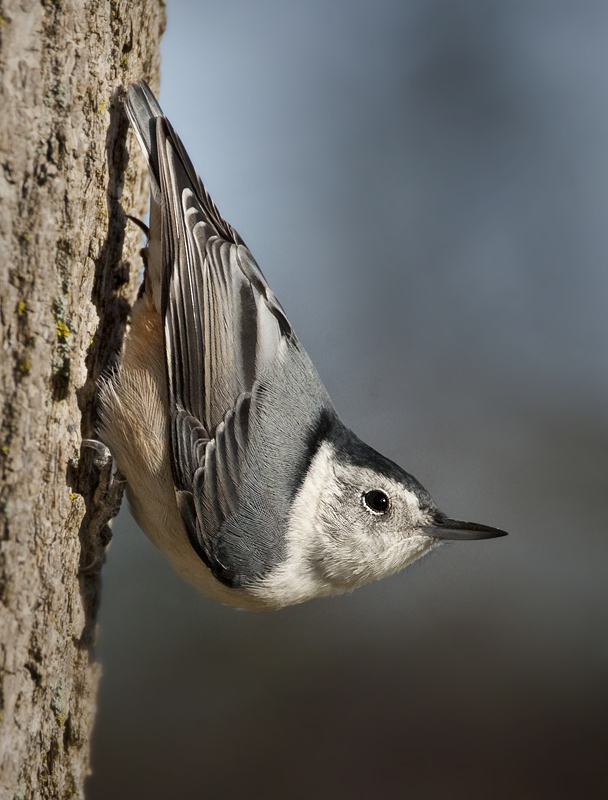
The second shot is of a female Eastern Towhee which are only seen around this area for a week or so every spring & fall as they pass through during their migration.
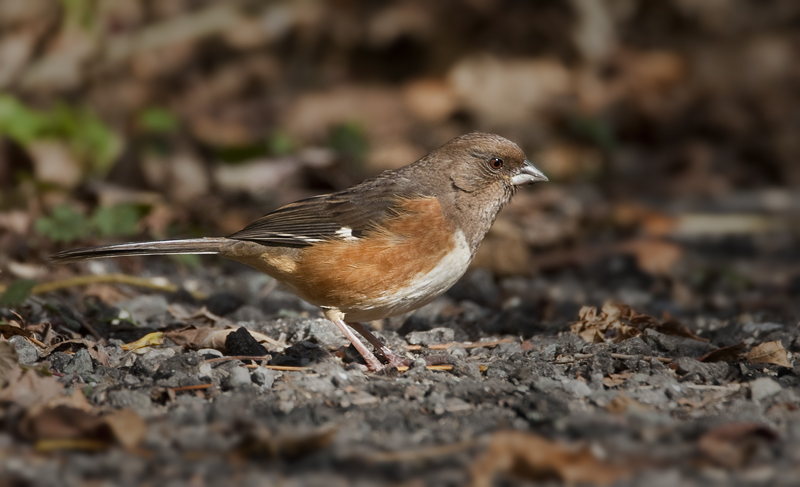
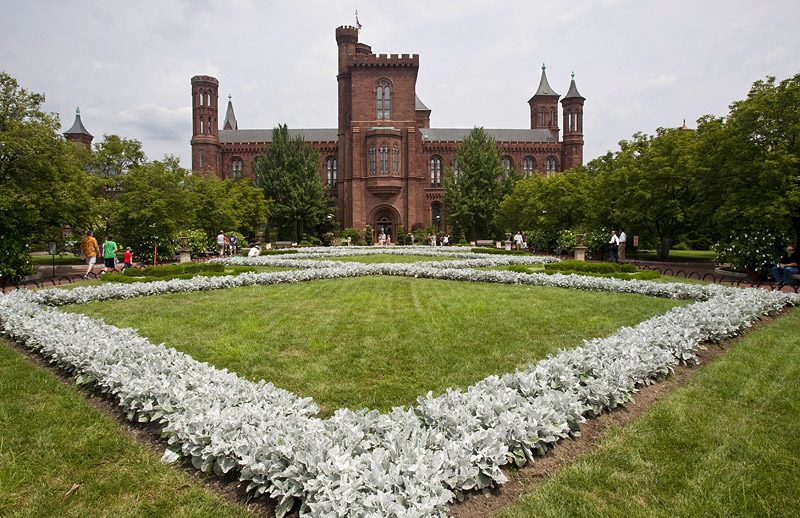
by Scott Martin Photography | Oct 31, 2010 | Blog, Cityscapes, Landscapes
Its been a long time processing some of the hundreds….OK thousands… of shots taken in Washington this summer. I hope you have enjoyed them and also learned a little about the rich history that accompanies these images.
The Smithsonian Castle. Did you know that the Smithsonian Institution is the world’s largest museum complex & research organization, consisting of a national zoo, nineteen museums and nine research centres? In 1826 James Smithson (British Scientist) left his estate to his nephew, who then died in 1836 leaving no heirs. According to Smithson’s will, should the nephew die without heirs the entire estate was to then be given to the United States to found the Smithsonian Institution…..and the rest, they say, is history.

Smithsonian Castle
.
.
The National Gallery of Art – East Building
.
This shot is one of my favourites, even though taken looking directly into the sun makes for harsh light. Taken at 16mm with the camera about 18″ off the ground, this shot is virtually uncropped. The Washington Monument in the BG is just over a mile away and getting the shot with no people on the walkway was a challenge.
Martin Luther King Jr. gave his “I Have a Dream” speech from the steps of the Lincoln Memorial on August 28, 1963. The speech became the defining moment of the American Civil Rights Movement when it was delivered to over 200,000 supporters who had gathered for the March On Washington for Jobs & Freedom Rally. The speech lasted only seventeen minutes and has been regarded by scholars as the top American speech of the twentieth century.
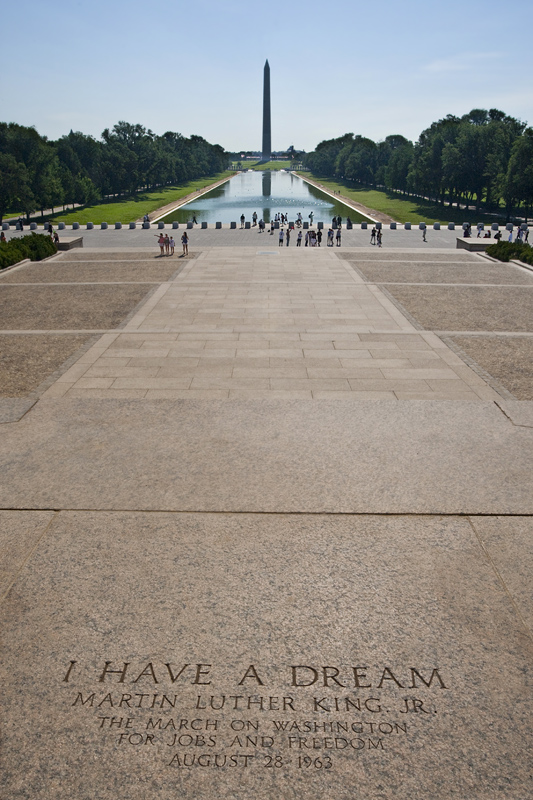
.
.
The crucifix in this image is life size (note the door on the right for reference).
.
.
I rarely do much post processing other than my normal work flow, however I did take some liberty with this last image in order to keep the shot. Let me know what you think.
.
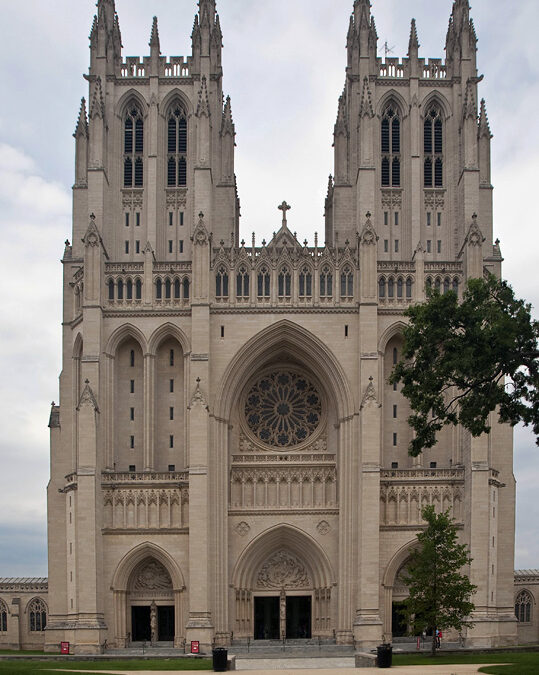
by Scott Martin Photography | Oct 27, 2010 | Blog, Cityscapes, Landscapes
The purpose of the cathedral was to be a “great church with a national purpose, equally open to all” and it has been the home to many memorial services, funerals and religious ceremonies. Martin Luther King Jr. preached his last Sunday sermon from the Washington National Cathedral in 1963 shortly before his assassination. Billy Graham preached there at the memorial service held after the 9/11 tragedy. The cathedral was begun under the auspices of the Protestant Episcopal Church however defines its mission as ecumenical.
Construction of the cathedral began in 1907 and was completed in 1990 using only medieval construction techniques in keeping with its fourteenth century English Gothic design. Most likely it will be the last Gothic building attempted anywhere in the world as modern design and construction techniques make buildings like the cathedral prohibitively expensive and impractical to build (and they take too long to build; eighty-three years in this case).
It is difficult if not impossible to convey the sheer size of the cathedral and this shot of the main church entrance doesn’t do it justice even with the people on the entrance steps of the camera right doors.
The “small” cross above the table is over six feet in height.
This image below is a thirty second time exposure of a wooden crucifix located high above the main pulpit in the cathedral. You can the see the same crucifix in the image above for some perspective.
The main pulpit.
President Woodrow Wilson lies in a tomb at the midpoint of the main cathedral.
Looking towards the main pulpit from inside the main entrance doors.
Looking back towards the Rose Window and main entrance from the midpoint of the cathedral.
It was a privilege to photograph inside the cathedral and I was most grateful for being able to use a tripod inside the church (which is normally not allowed). The lighting inside the building is less than ideal and most of the images shown were taken at shutter speeds of more than two seconds, the longest being thirty seconds (ISO 100). We took hundreds of images using three lenses (16-35, 24-105 & 70-200).
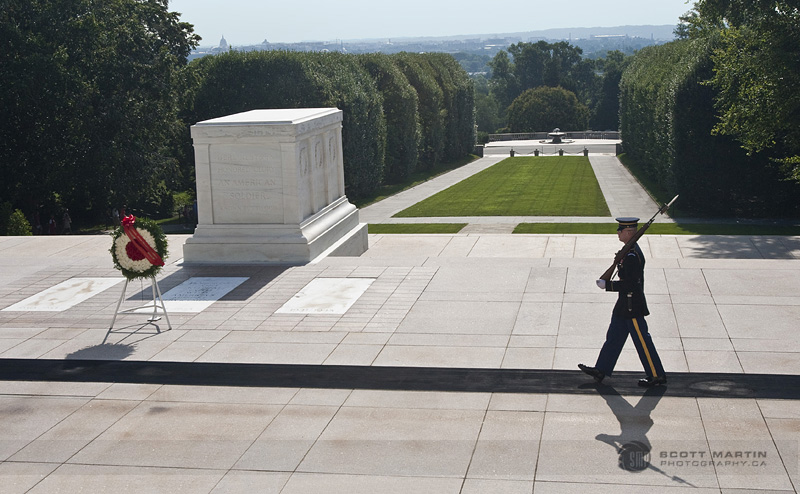
by Scott Martin Photography | Oct 20, 2010 | Blog, Cityscapes, Landscapes
The Tomb of the Unknowns, often referred to as the Tomb of the Unknown Soldier, is attached to the south side of the Memorial Amphitheater in Arlington National Cemetery. It has been guarded continuously 24/7/365 since July 2, 1937 by the Tomb Guards, a platoon within the 3rd US Infantry Division. The changing of the guard at the Tomb of the Unknowns is an honour to observe and demonstrates the highest respect paid to even the unknown servicemen who gave their lives for their country.
The WW I unknown soldier was randomly selected by Sargent Edward Younger from four unknown servicemen exhumed from cemeteries in France on October 24, 1921. The selected soldier was brought to America where he lay in state in the Capitol until being re-interred in the plaza of the Memorial Amphitheater on November 11, 1921. The sarcophagus seen in these pictures is located above the WW I Unknown Soldier. There are three crypts immediately west of the sarcophagus, marked by three white marble slabs. The outside crypts contain the bodies of an unknown soldier from WW II and the Korean War while the central crypt formerly contained the body of an unknown soldier from the Vietnam War. The then unknown Vietnam soldier was exhumed in 1998 and positively identified through DNA testing as First Lieutenant Michael Blassie. The Vietnam crypt remains empty to this day.
The lone Tomb Guard on his watch, the Tomb of the Unknowns is on the left and you can see the three marble slabs above the crypts for the WW II, Vietnam and Korean War unknown soldiers.
View from the Memorial Amphitheater looking West.
Taken looking directly into the sun, but the shadow made for an interesting image. The guards always carry their rife (without a magazine) on the shoulder opposite the tomb.
.
.
.
.

by Scott Martin Photography | Oct 17, 2010 | Blog, Cityscapes, Landscapes
The last blog post highlighted the Kennedy grave sites, with the JFK site generally regarded as the most visited grave in the cemetery. The images posted today are taken throughout the cemetery and show the solemn beauty of Arlington National Cemetery. The image of the truck placing caskets at the grave sides is a stark reminder that up to thirty burial services take place at the cemetery every day.
Its hard to capture a shot that shows how large the cemetery is, but I’ve tried to do so with the first two images.
The entrance to the Naval section of Arlington National Cemetery.
The cross on the right (below) is the Canadian Cross of Sacrifice and honours U.S. citizens who fought and died while serving in the Canadian Armed Forces during the First, Second and Korean Wars. The Cross of Sacrifice was suggested by Prime Minister Mackenzie King in 1925 and approved by President Calvin Coolidge June 12, 1925. The cross was dedicated in Arlington National Cemetery on Armistice Day 1927 (November 11th).
The next post will finish up in Arlington Cemetery with a look at the Tomb of the Unknown Soldier and the changing of the guard ceremony that has carried on uninterrupted 24/7/365 for many years.






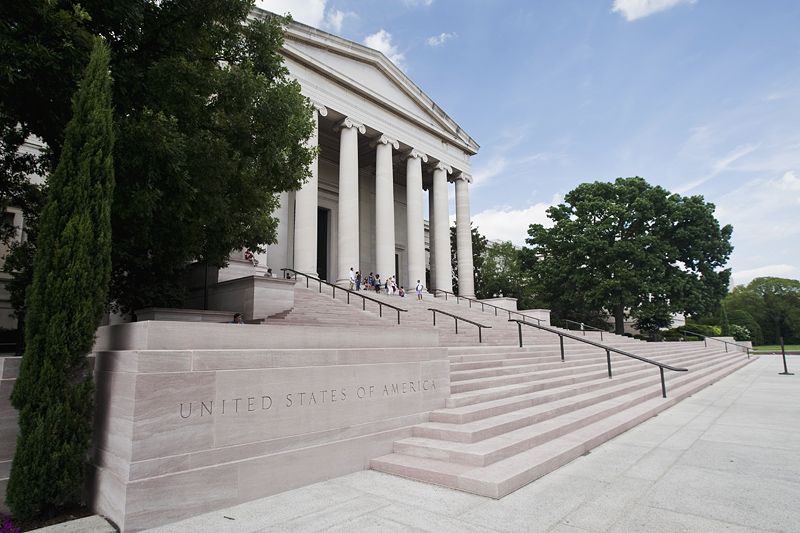
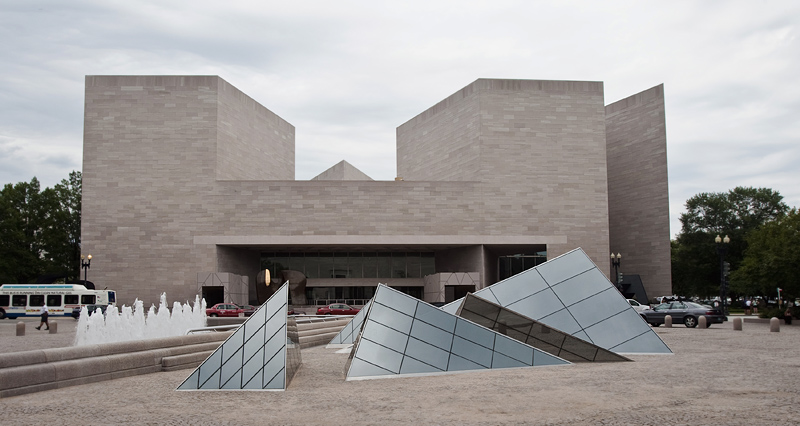

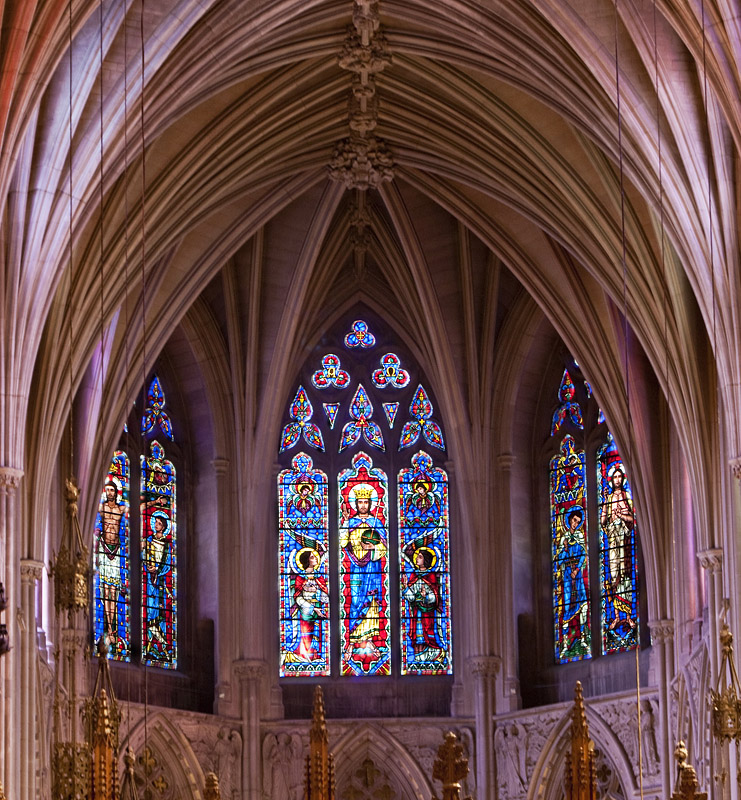
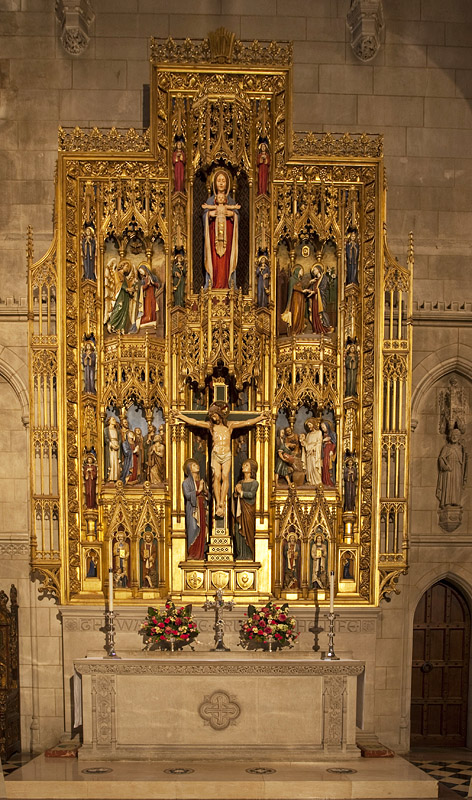
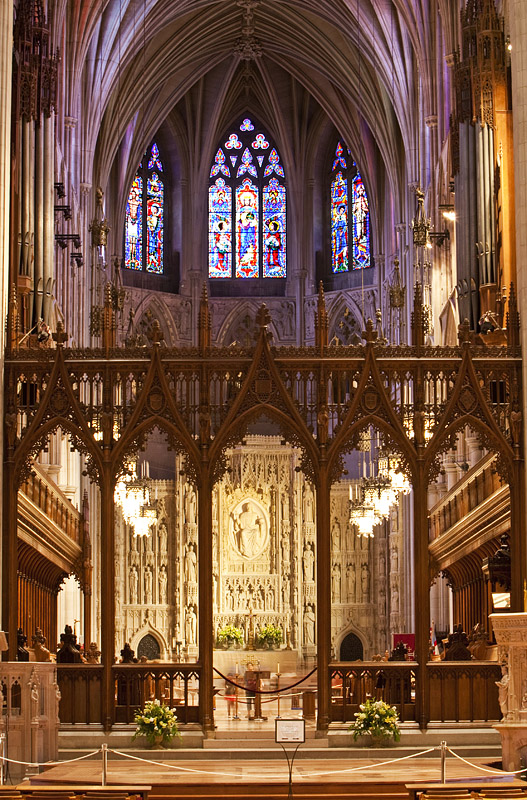
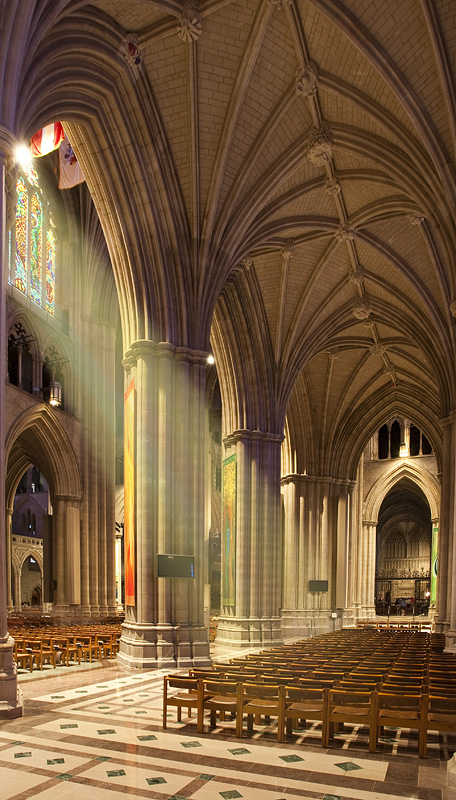

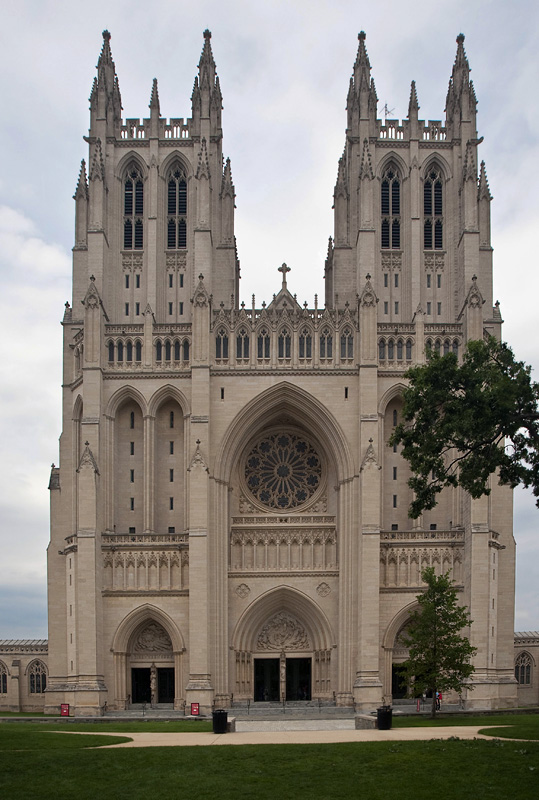
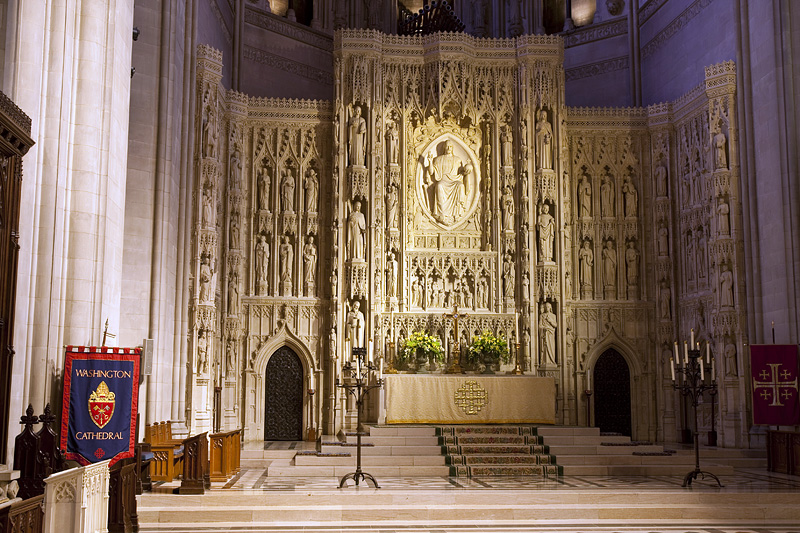
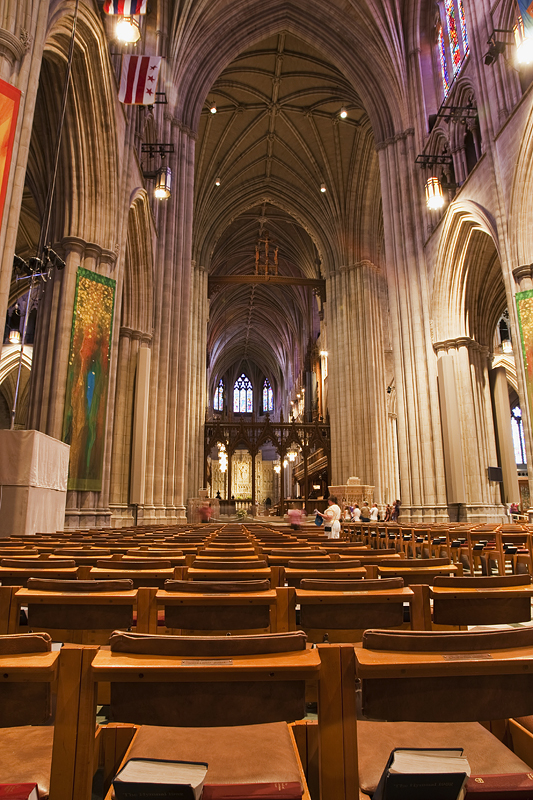
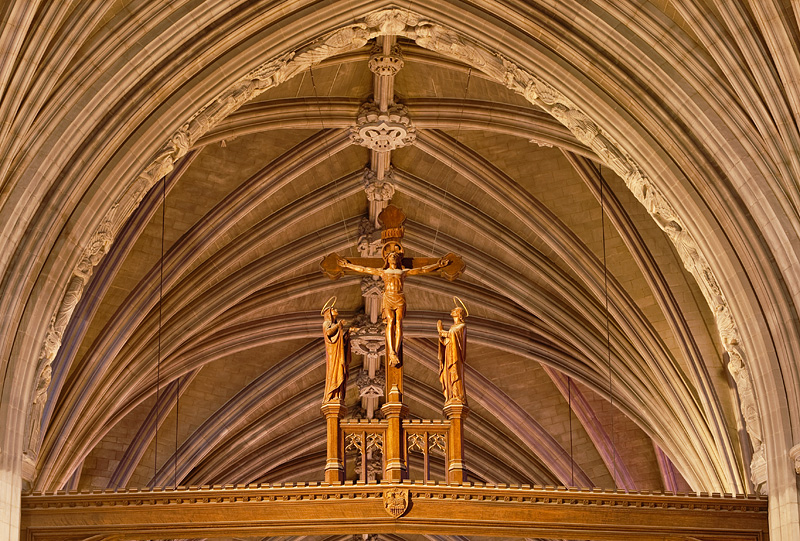
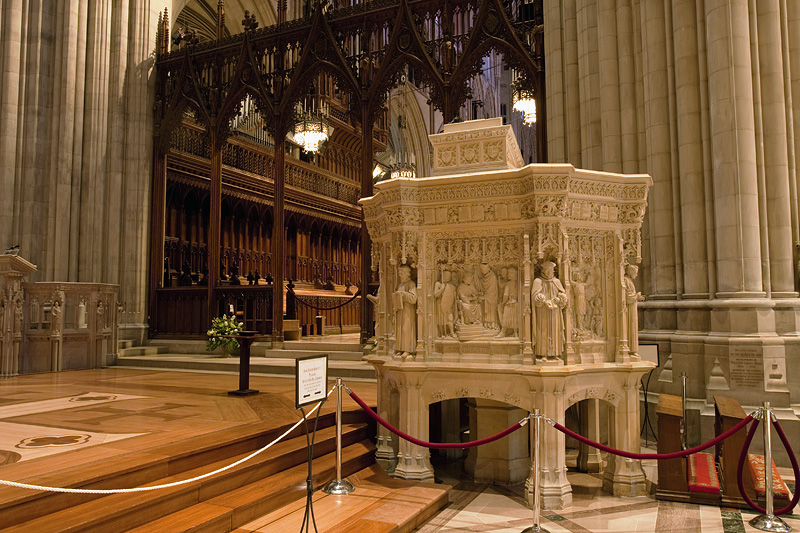
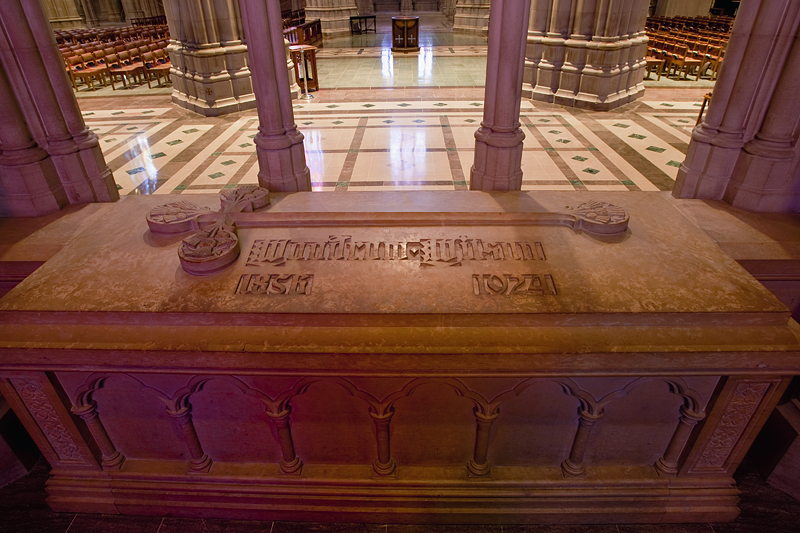
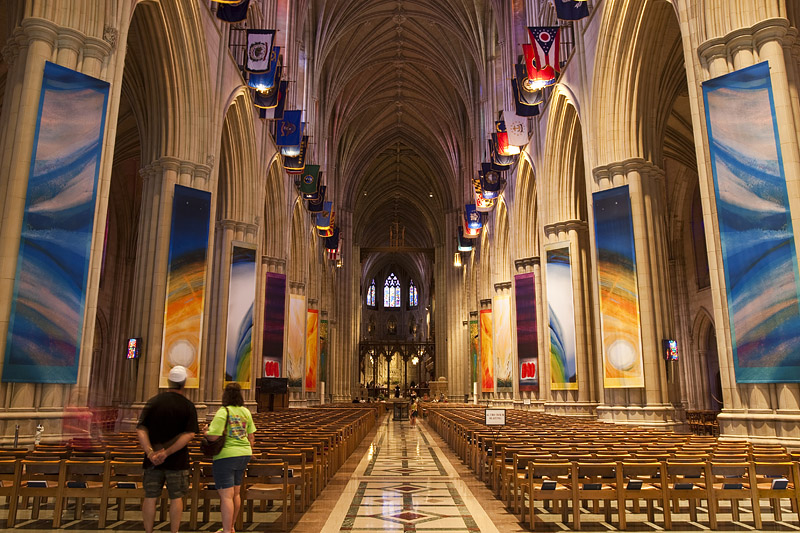
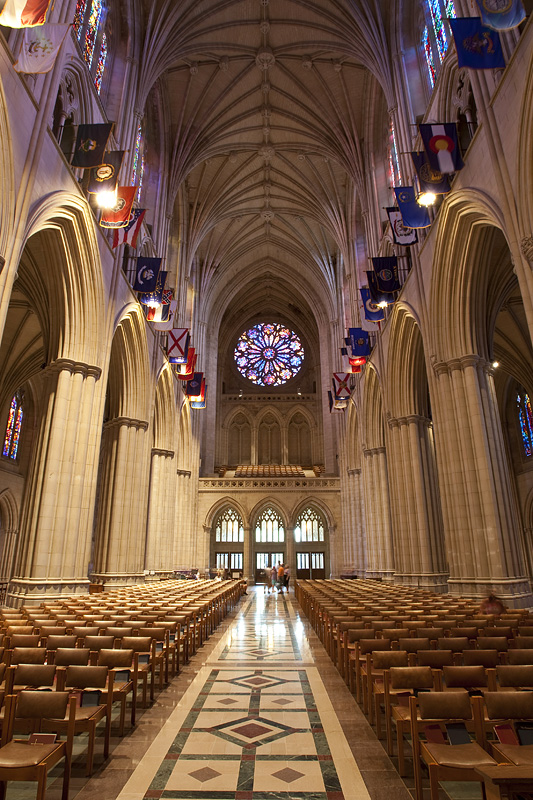


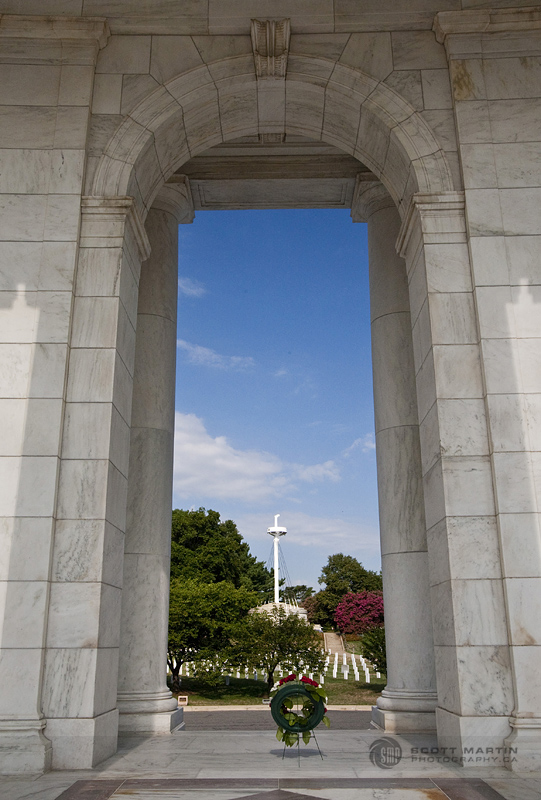
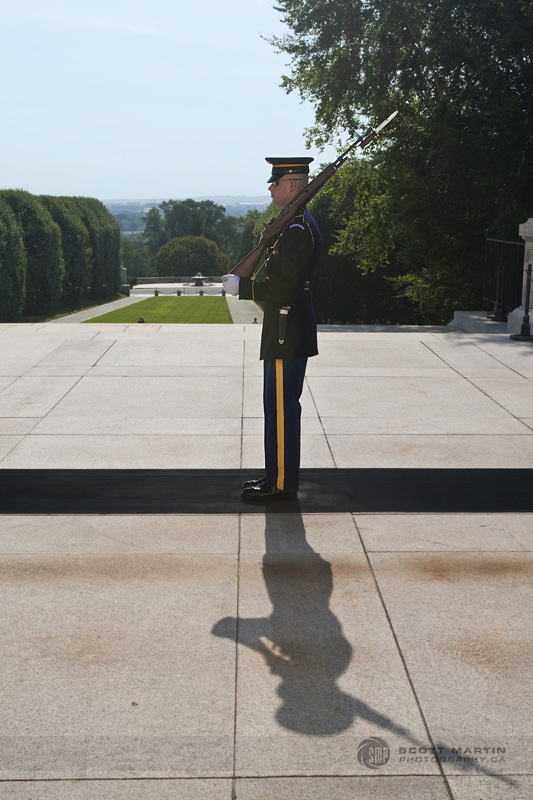
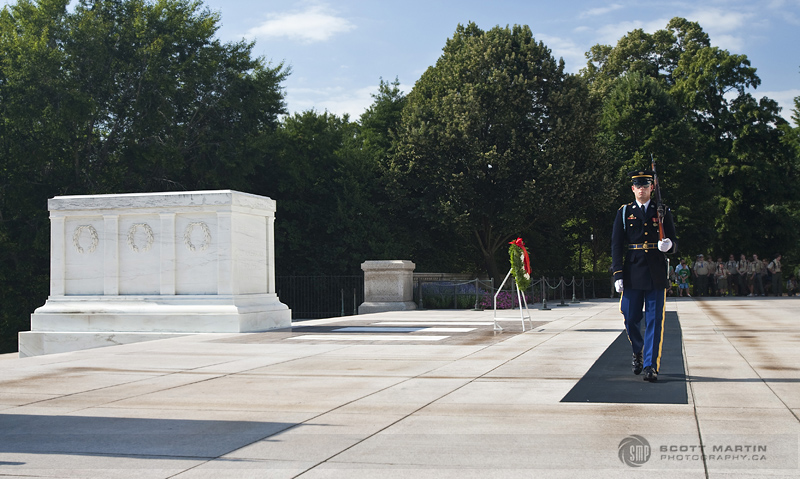
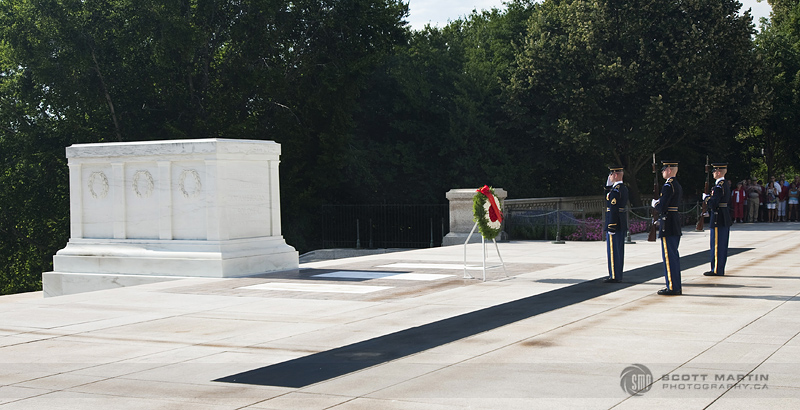
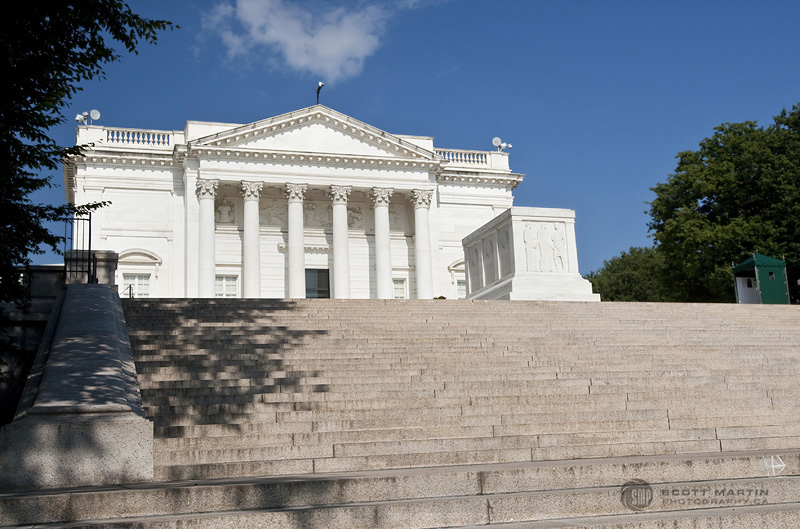
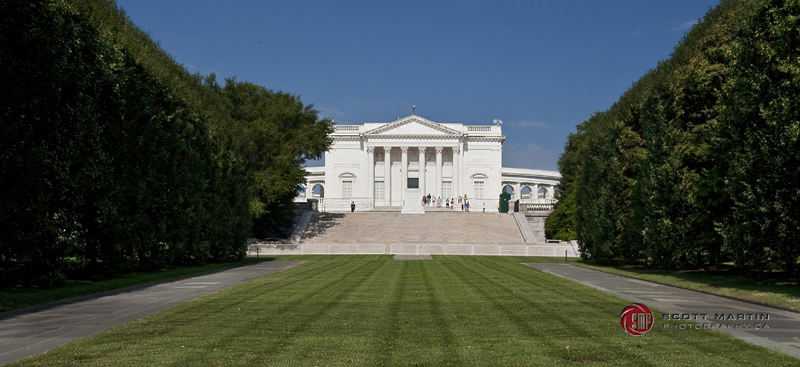



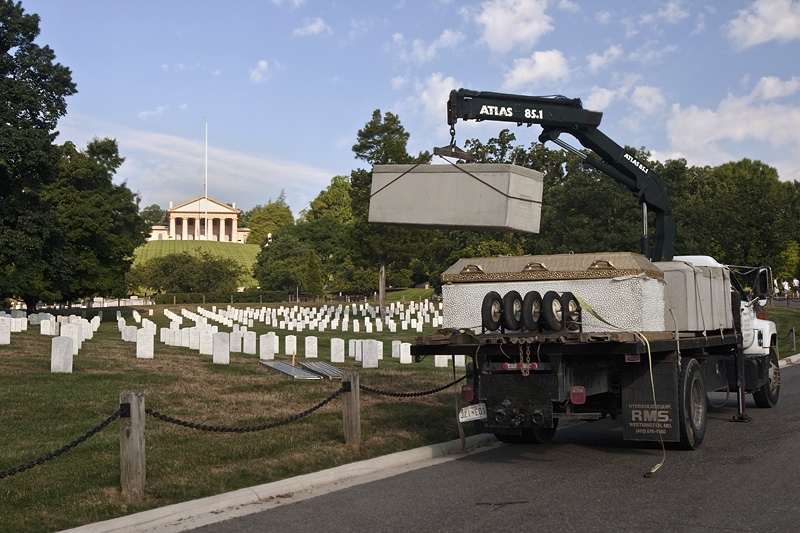
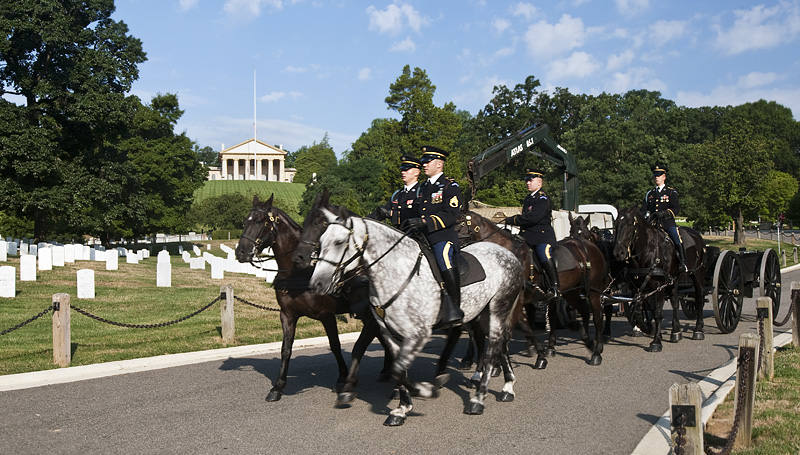
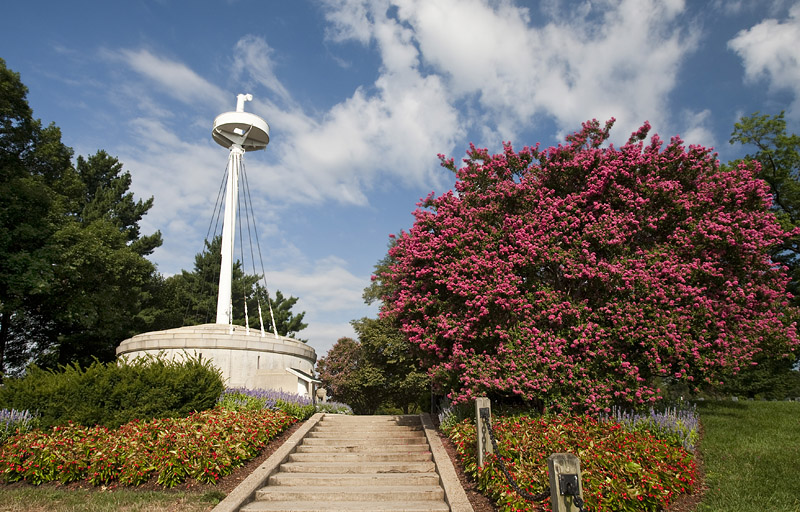
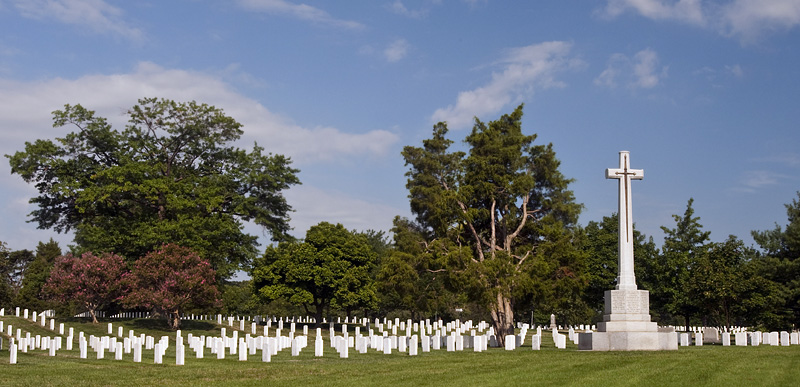

Follow Scott Martin Photography